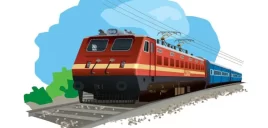Fishplated joints are the most basic joints seen, on lines where there is no track-circuiting, and no welded rail in use. Fishplated joints are so called because of the use of a fishplate, which is a bar that is attached by means of bolts (fishbolts) to the rails on either side of the joint. Usually there are two bolts securing the fishplate on either side. There are variations in the basic fishplate design to account for different weights of rails, and joints in special situations such as on sharp curves, at points, etc. For 60kg/m track, while the rail specification is very close to Revised British Standard, the fishplates (and fishbolts) are considerably stronger than the British standard specifies. Combination fishplates are used to secure rails of different weights or different profiles together at a joint. Expansion joints or “rail expansion joints” are provided in welded rail sections and other places where it is desirable to allow the rails to expand and contract with the varying temperature. (See below.) Special fishplates are used for expansion joints (different types for different weights of rails, and also for simple expansion joints and special expansion joints with central rail pieces.
Insulated rail joints are used in places where it is essential to keep adjacent rails electrically insulated from each other for the purposes of track circuiting or signalling. (See the section on interlocking and track circuits.) Insulated rail joints (also known as “block joints” in some cases) are of three types. Class A joints are an older type, made of wood to achieve the electrical insulation. Class B joints use Nylon 66 (and are hence known as “Nylon insulated rail joints”) to achieve the insulation. Class C joints are glued insulated rail joints quite commonly seen now on most high-speed lines. G3(L) joints are longer and use 6 fishbolts; G3(S) joints are shorter, and use 4 fishbolts.
Source – IFRCA.org
Disclaimer: The Information /News /Video provided in this Platform has been collected from different sources. We Believe that “Knowledge Is Power” and our aim is to create general awareness among people and make them powerful through easily accessible Information. NOTE: We do not take any responsibility of authenticity of Information/News/Videos.
This entry was posted in 2 Railway Employee, STUDY NEW, Railway Employee











